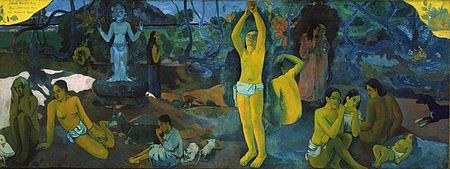Sarim
| |||||||||||||
Read other articles:

Isobuteneformula di struttura Nome IUPAC2-metilpropene Nomi alternativiisobutene Caratteristiche generaliFormula bruta o molecolareC4H8 Massa molecolare (u)56,106 Aspettogas incolore Numero CAS115-11-7 Numero EINECS204-066-3 PubChem8255 SMILESCC(=C)C Proprietà chimico-fisicheDensità (g/cm3, in c.s.)0,5879 (in fase liquida) Indice di rifrazione1,381 Solubilità in acqua263 mg/L a 25 °C Coefficiente di ripartizione 1-ottanolo/acqua2,34 Temperatura di fusione−140,3 °C (132,8 K) Temp…

2023 American League Championship Series Team (Wins) Manager(s) Season Texas Rangers (4) Bruce Bochy 90–72 (.556), GB: 0 Houston Astros (3) Dusty Baker 90–72 (.556), GA: 0DatesOctober 15–23MVPAdolis García (Texas)UmpiresJordan Baker, Dan Bellino, Doug Eddings, James Hoye (crew chief), Marvin Hudson, Mark Ripperger, Stu ScheurwaterBroadcastTelevisionFox (Games 1–2, 7)FS1 (Games 2–7)TV announcersJoe Davis, John Smoltz, Ken Rosenthal, and Tom VerducciRadioESPNRadio announcersKarl Ravech,…

这是马来族人名,“尤索夫”是父名,不是姓氏,提及此人时应以其自身的名“法迪拉”为主。 尊敬的拿督斯里哈芝法迪拉·尤索夫Fadillah bin Haji YusofSSAP DGSM PGBK 国会议员 副首相 第14任马来西亚副首相现任就任日期2022年12月3日与阿末扎希同时在任君主最高元首苏丹阿都拉陛下最高元首苏丹依布拉欣·依斯迈陛下首相安华·依布拉欣前任依斯迈沙比里 马来西亚能源转型与公共…

2016年美國總統選舉 ← 2012 2016年11月8日 2020 → 538個選舉人團席位獲勝需270票民意調查投票率55.7%[1][2] ▲ 0.8 % 获提名人 唐納·川普 希拉莉·克林頓 政党 共和黨 民主党 家鄉州 紐約州 紐約州 竞选搭档 迈克·彭斯 蒂姆·凱恩 选举人票 304[3][4][註 1] 227[5] 胜出州/省 30 + 緬-2 20 + DC 民選得票 62,984,828[6] 65,853,514[6] 得…

English professional golfer Not to be confused with Rose McGowan. Ross McGowanPersonal informationFull nameRoss Ian Thomas McGowanBorn (1982-04-23) 23 April 1982 (age 42)Basildon, Essex, EnglandHeight5 ft 11 in (1.80 m)Weight190 lb (86 kg; 14 st)Sporting nationality EnglandResidenceLondon, EnglandCareerCollegeUniversity of TennesseeTurned professional2006Current tour(s)European TourSunshine TourFormer tour(s)Challenge TourProfessional wins8Highest ranking6…

Pour les articles homonymes, voir Bakayoko. Tiémoué Bakayoko Tiémoué Bakayoko avec le Chelsea FC (2017). Situation actuelle Équipe FC Lorient Numéro 14 Biographie Nationalité Français Ivoirien Nat. sportive Français Naissance 17 août 1994 (29 ans) Paris (France) Taille 1,89 m (6′ 2″) Période pro. 2013 - Poste Milieu défensif Pied fort Droit Parcours junior Années Club 2000-2004 Olympique de Paris XVe 2004-2006 CA Paris 14 2006-2008 Montrouge FC 92 2008-2013 Stade …

Para otros usos de este término, véase Esmeralda (desambiguación). Esmeralda GeneralCategoría Minerales ciclosilicatosClase 9.CJ.05 (variedad de berilo)Fórmula química Be3Al2(SiO3)6::CrPropiedades físicasColor Verde esmeraldaRaya BlancaLustre VítreoSistema cristalino HexagonalHábito cristalino De masivo a cristalino bien definidoFractura ConcoideaDureza 7.5-8Peso específico 2,70 y 2,90Índice de refracción 1,576 - 1,582Birrefringencia δ = 0.0040–0.0070Pleocroísmo Distinto, azul-ve…

此条目序言章节没有充分总结全文内容要点。 (2019年3月21日)请考虑扩充序言,清晰概述条目所有重點。请在条目的讨论页讨论此问题。 哈萨克斯坦總統哈薩克總統旗現任Қасым-Жомарт Кемелұлы Тоқаев卡瑟姆若马尔特·托卡耶夫自2019年3月20日在任任期7年首任努尔苏丹·纳扎尔巴耶夫设立1990年4月24日(哈薩克蘇維埃社會主義共和國總統) 哈萨克斯坦 哈萨克斯坦政府與�…

كأس السوبر الأوروبي 1989 برشلونة إيه سي ميلان 1 2 في مجموع المبارتينالمباراة الأولى برشلونة إيه سي ميلان 1 1 التاريخ23 نوفمبر 1989الملعبكامب نو، برشلونةالحكمجويل كينيو (فرنسا)الحضور50,000المباراة الثانية إيه سي ميلان برشلونة 1 0 التاريخ7 ديسمبر 1989الملعبسان سيرو، ميلانوالحكمهيلموت ك…

Honorius Augustodunensis (1385) BiografiKelahirank. 1080 dekade Kematiank. 1154 (64/74 tahun) Data pribadiAgamaGereja Katolik Roma KegiatanPekerjaanrahib, ahli geografi, presbiter, filsuf, teolog, penulis Honorius Augustodunensis (s. 1080–1154?), yang lebih dikenal sebagai Honorius dari Autun, adalah seorang teolog Kristen abad ke-12 paling populer yang menulis tentang beberapa subyek. Ia menulis bahasan non-skolastik, dengan gaya bahasa sehari-hari, dan karya-kar…

Частина серії проФілософіяLeft to right: Plato, Kant, Nietzsche, Buddha, Confucius, AverroesПлатонКантНіцшеБуддаКонфуційАверроес Філософи Епістемологи Естетики Етики Логіки Метафізики Соціально-політичні філософи Традиції Аналітична Арістотелівська Африканська Близькосхідна іранська Буддійсь…

Nama ini menggunakan cara penamaan Spanyol: nama keluarga pertama atau paternalnya adalah Rivera dan nama keluarga kedua atau maternalnya adalah Hurtado. Angélica RiveraAngélica Rivera Ibu Negara MeksikoMasa jabatan1 Desember 2012 – 30 November 2018PresidenEnrique Peña NietoPendahuluMargarita ZavalaPenggantiBeatriz Gutiérrez Müller Informasi pribadiLahirAngélica Rivera Hurtado02 Agustus 1969 (umur 54)[1]Mexico City, MeksikoSuami/istriJosé Alberto Castro (1994-…

Sporting event delegationIran at theParalympicsIPC codeIRINPCI.R. Iran National Paralympic CommitteeWebsitewww.paralympic.irMedals Gold 67 Silver 48 Bronze 45 Total 160 Summer appearances1988199219962000200420082012201620202024Winter appearances1998200220062010201420182022 Iran first competed at the Paralympic Games in 1988, at the Summer Games in Seoul, South Korea. Medals See also: All-time Paralympic Games medal table Medals by Summer Games Games Athletes Gold Silver Bronze Total Rank 1960 Ro…

The examples and perspective in this article may not represent a worldwide view of the subject. You may improve this article, discuss the issue on the talk page, or create a new article, as appropriate. (July 2023) (Learn how and when to remove this message) Global economic recession Early 1980s recessionU.S. unemployment rateDuration1980–1982[1]Causetight monetary policy in an effort to fight high inflation percentages worldwideOutcomeskyrocketing unemployment worldwide, increased wea…

This list is incomplete; you can help by adding missing items. (August 2008) This is a list of law enforcement agencies in the state of Minnesota. According to the US Bureau of Justice Statistics' 2008 Census of State and Local Law Enforcement Agencies, the state had 448 law enforcement agencies employing 9,667 sworn police officers, about 185 for each 100,000 residents.[1] State agencies Minnesota Department of Corrections Minnesota Department of Natural Resources Law Enforcement Divisi…

Artikel ini memberikan informasi dasar tentang topik kesehatan. Informasi dalam artikel ini hanya boleh digunakan untuk penjelasan ilmiah; bukan untuk diagnosis diri dan tidak dapat menggantikan diagnosis medis. Wikipedia tidak memberikan konsultasi medis. Jika Anda perlu bantuan atau hendak berobat, berkonsultasilah dengan tenaga kesehatan profesional.artikel mengandung terlalu banyak istilah teknis. Tolong bantu mengembangkannya agar dapat dipahami oleh orang awam, tanpa harus menghilangkan as…

50.ª edición de los Premios David di Donatello LocalizaciónPaís ItaliaDatos generalesTipo ceremonia de premiaciónHistóricoFecha 29 de abril de 2005Cronología Anexo:Premio David di Donatello 2004 ◄ Actual ► Anexo:Premio David di Donatello 2006 [editar datos en Wikidata] La ceremonia de los premios David di Donatello 2005 se realizó en Roma el 29 de abril de 2005. Premios Mejor película: Le conseguenze dell'amore Mejor dirección: Paolo Sorrentino (Le conseguenze dell'amore)…

Cuisine of Manipur, a state of northeastern India Manipuri cuisine refers to the cuisine of Manipur, a state of northeastern India. Daily meals are based on rice, with a few side dishes of vegetables, fish and meat.[1] A meal would usually have a vegetable stew called ensaang or athongba, flavored with dried or fried fish; stir-fried vegetables called kanghou; and a spicy item, which could be morok metpa (a chili paste), eromba (boiled and mashed vegetables with chili and fermented fish)…

1948 Democratic vice presidential nomination ← 1944 July 13, 1948 (1948-07-13) 1952 → Nominee Alben W. Barkley Home state Kentucky Previous Vice Presidential nominee Harry S. Truman Vice Presidential nominee Alben W. Barkley This article lists those who were potential candidates for the Democratic nomination for Vice President of the United States in the 1948 election. At the 1948 Democratic National Convention, President Harry S. Truman won nomin…

La FerrièrecomuneLa Ferrière – VedutaPanorama di La Ferrière LocalizzazioneStato Francia RegioneAlvernia-Rodano-Alpi Dipartimento Isère ArrondissementGrenoble CantoneLe Haut-Grésivaudan TerritorioCoordinate45°19′N 6°05′E45°19′N, 6°05′E (La Ferrière) Superficie47,75 km² Abitanti232[1] (2009) Densità4,86 ab./km² Altre informazioniCod. postale38580 Fuso orarioUTC+1 Codice INSEE38163 CartografiaLa Ferrière Modifica dati su Wikidata · Manuale La F…